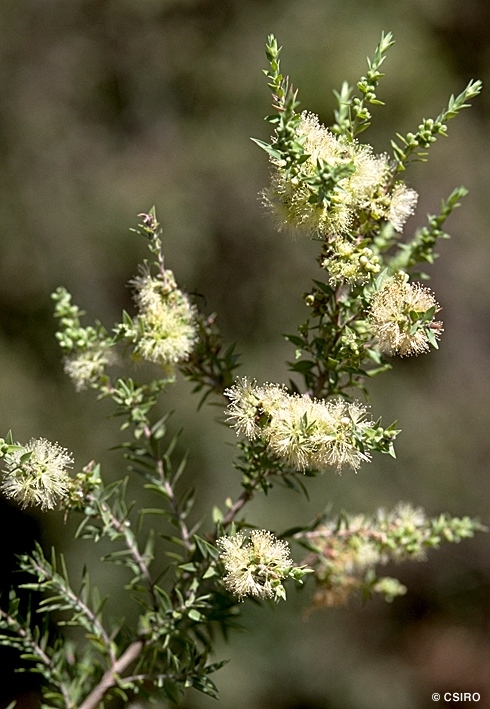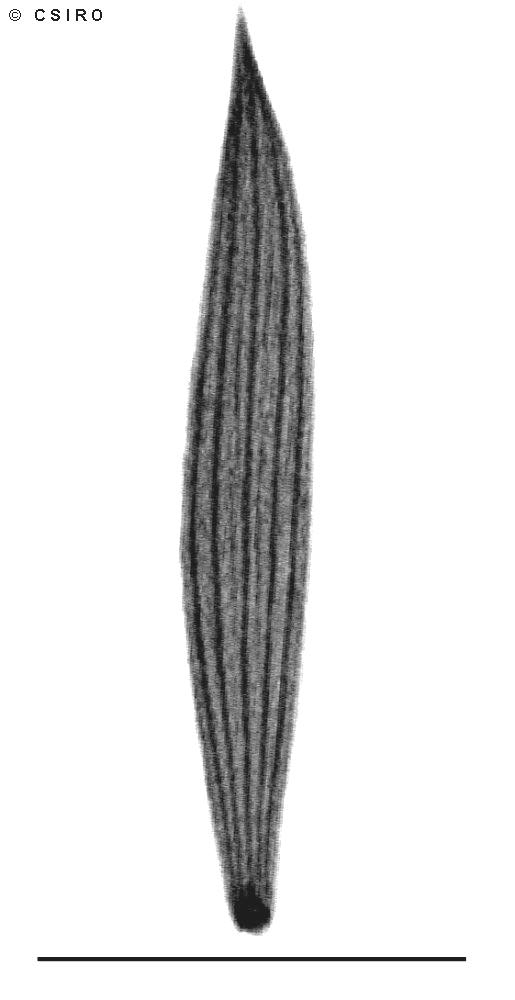Australian Tropical Rainforest Plants - Online edition
Melaleuca bracteata F.Muell.




Mueller, F.J.H. von (1858) Fragmenta Phytographiae Australiae 1: 15. Type: Ad sinum Moreton Bay. W. Hill. In Australia tropica haud rara.
Mock Olive; River Tea Tree; Olive, Mock; Black Tea Tree
Under suitable conditions can grow into a tree about 10 m tall but usually flowers and fruits as a shrub 2-4 m tall.
Leaf blades about 0.8-2 x 0.1-0.3 cm, petioles very short or absent. Young leaves and twigs clothed in silky white +/- erect hairs. Venation longitudinal, indistinct, probably 5-7 veins more obvious than the rest. Leaf blade hairy on the upper surface at least when young. Oil dots numerous, more obvious when viewed from the underside. Twigs densely clothed in pale tortuous hairs.
Inflorescence 10-20 mm wide. Flowers borne singly or in groups of three in the axils of quite well developed leaves. Petals shed early. Stamens about 7-8 mm long +/- fused in five bundles (each containing about 20 stamens) opposite the petals.
Fruits +/- globular, sessile, about 2-3 mm diam., calyx lobes (five) persistent at the apex. Fruits aggregated into cylindrical masses along sections of the twigs. Seeds about 0.5-0.8 mm long.
Cotyledons +/- orbicular, about 2 x 2-3 mm. First pair of leaves +/- spathulate. At the tenth leaf stage: leaf blade and stem glabrous; leaves narrowly elliptic, sessile; oil dots quite numerous but somewhat sparsely distributed. Venation longitudinal but difficult to see, five veins more obvious than the rest. Seed germination time 5 to 19 days.
Endemic to Australia(?), occurs in WA, NT, CYP(?), NEQ, CEQ and southwards as far as northern New South Wales. Altitudinal range in northern Australia from 300-750 m. Usually grows in swampy or soakage situations in areas which are otherwise predominantly open forest but also found on the edge of gallery forest, vine thickets and monsoon forest.
A useful small tree cultivated widely for its compact shape, numerous small, cream coloured 'bottle brush' flowers and its ability to grow in a variety of conditions.
The oil of this species may be of some use as an insect repellent. (http://squid2.laughingsquid.net/hosts/herbweb.com /herbage/A16789.htm)





